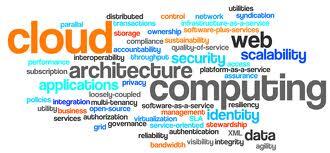Linux and UNIX are very similar to each other, but they have some common differences – discover what they are in this blog to find out which one is right for your organisation.
.jpg)
Linux and UNIX are very similar to each other, but they have some common differences – discover what they are in this blog to find out which one is right for your organisation.
.jpg)
The history of the UNIX operating system dates back to 1969. Since then it has developed and evolved with the creation of a number of different versions and different environments. Most of today’s variants of UNIX are licensed versions of the technology. Today’s Oracle Solaris, for example, began life as Sun Solaris until Oracle took over the company in 2010.
Solaris was originally designed by Sun Microsystems to incorporate a wide array of tools and environments in order allow its customers to get the best out of its own workstation and server hardware. Hewlett Packard and IBM created their own flavours of UNIX too, in the respective form of HP-UX and AIX.
Linux vs UNIX: A free alternative
In 1991 there was a growing requirement for a free commercial alternative. Linus Torvalds therefore set out to create a new free operating system kernel, which eventually became known as Linux. It began with a small number of C files under a licence that prohibited commercial distribution. In 2015’s version 3.18 under a GNU Public Licence, IBM says that more than 18 million lines of Open Source code are available to developers.
The GNU Public Licence is the most widely available free software licence that you’ll find today. In accordance with Open Source principles it permits organisations and individuals the freedom to run, distribute, study, share by copying and to modify the code of the software.
Linux vs UNIX performance will be dominated by Linux. LinuxIT estimates that 65% of applications running on proprietary versions of UNIX in 2012 will have migrated to Linux by 2017. For example, organisations are increasingly ‘Preparing for Private Cloud and Hybrid IT with Red Hat Cloud Infrastructure’, says a February 2015 IDC report by this title. Red Hat’s solutions use Linux.
UNIX Vs. Linux: Technical Differences
The UNIX vs. Linux difference not only emerges in the cost of the technologies, but also in how they differ from each other. Here are some examples of the UNIX vs Linux differences:
- Linux runs on a much wider range of platforms and types of architecture than their UNIX counterparts, such as the Intel and AMD led X86 platforms. Linux is popular because it has a high level of file system support compatibility with a wide array of different platforms in comparison to UNIX.
- The developers of commercial editions of UNIX have a specific target audience and platform in mind for their operating system. The source code is proprietary, and so it’s not freely available for any of the commercial versions of UNIX.
- Some Linux development projects are funded on a voluntary basis by, for example Debian, but others maintain a community version of their commercial Linux distributions: e.g. Red Hat with Fedora and SUSE with openSUSE.
- UNIX developers seek consistency between UNIX’s different versions: They have published standards that they are required to follow for the benefit of their customers. Linux encourages more diversity, and its developers come from a wider range of backgrounds, bringing different experiences and opinions. To remove any inconsistencies the Linux Standards Base was created, but some flavours of Linux still emulate UNIX.
- With UNIX commands, tools and other elements are rarely changed, and some command lines arguments and interfaces remain in later versions of the software. Commercial vendors either provide a compatibility layer when significant changes are made, or they offer the ability to run an older version of a tool.
- Linux is about scale out, but in comparison traditional UNIX is about scale up. Scale out refers to adding more resources to an environment. This kind of architecture includes clustered or distributed computing approaches where a number of small resources share the computing load of a single application. So if some of these fail the others can take over to ensure that the application remains available. Alternatively, if more redundancy is needed the cluster of services can be scaled out with additional server nodes.
- Linux is also more secure than UNIX. It is less affected by the threat of virus and malware attacks. Linux has had 60-100 viruses to date, but none are currently spreading, and UNIX has had 85-120 viruses – some of which are still spreading.
Linux vs. UNIX Costs
As Linux is freely available it has a cost advantage against UNIX, which due to the need to purchase licences can limit the user numbers. This is also a result of it coming with different cost structures according to different vendors. So Linux can be cheaper, more accessible and offer an improved opportunity to generate a return on investment (ROI) for your organisation.
Linux implementation will outstrip the UNIX equivalent and do it at a vastly reduced cost point. Hardware is more expensive on UNIX and you can’t use public Cloud like you can on Linux.
Next steps
Overall, Linux may be UNIX-like but there are enough substantial differences to prove that Linux may be better suited to your organisation. You can get ahead of your competitors by seeking further advice from a systems management specialist like LinuxIT to learn how Linux can add value to your organisation.
Takeaways:
- At least 65% of applications running on proprietary versions of UNIX in 2012 will have migrated to Linux by 2017.
- Because Linux is freely available it has a cost advantage against UNIX.
- Linux runs on a much wider range of platforms range and types of architecture than their UNIX counterparts.
- Linux is also more secure and more flexible than UNIX.
- Linux offers more flexibility, because it can embrace a wide variety of platforms. On the other hand, UNIX is often developed with a particular platform in mind.
Discover how Cloud services can benefit your by downloading: The Ultimate Guide to Managed Services in the Cloud
This post first appeared on the LinuxIT blog








